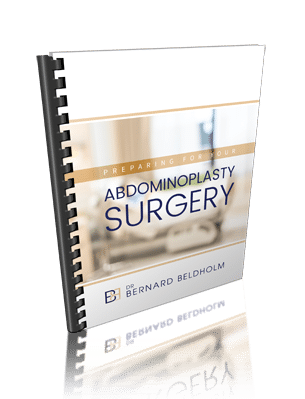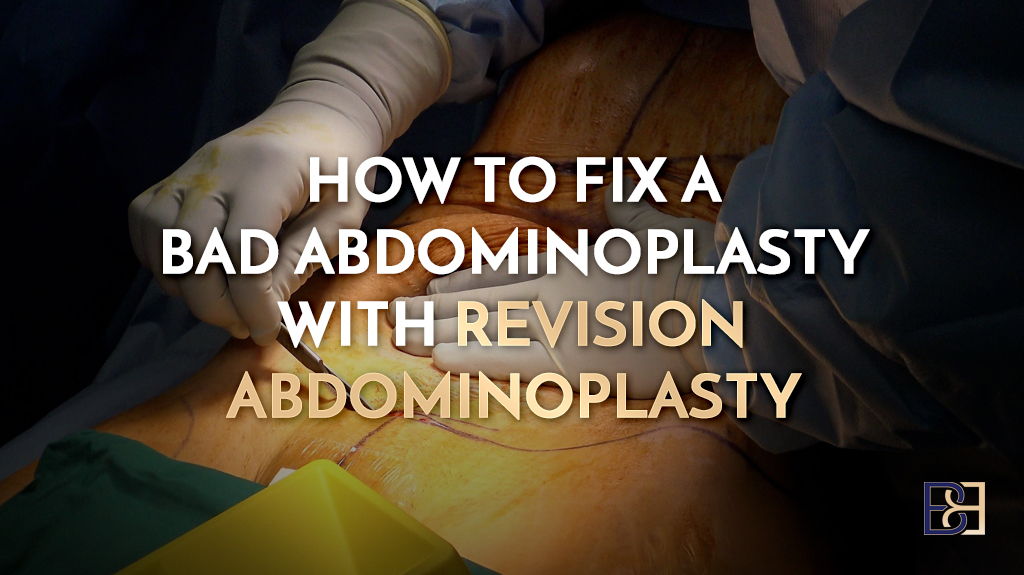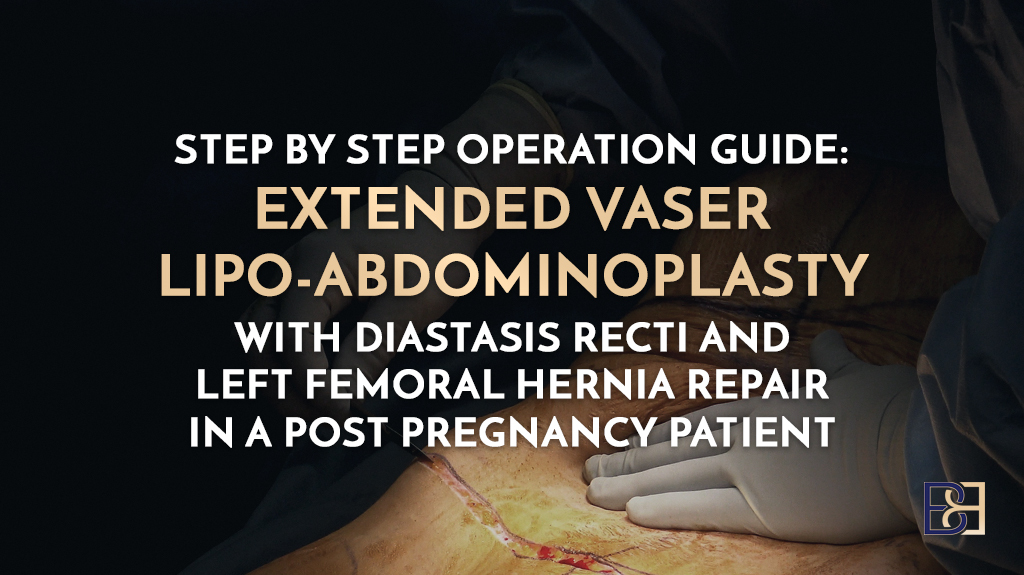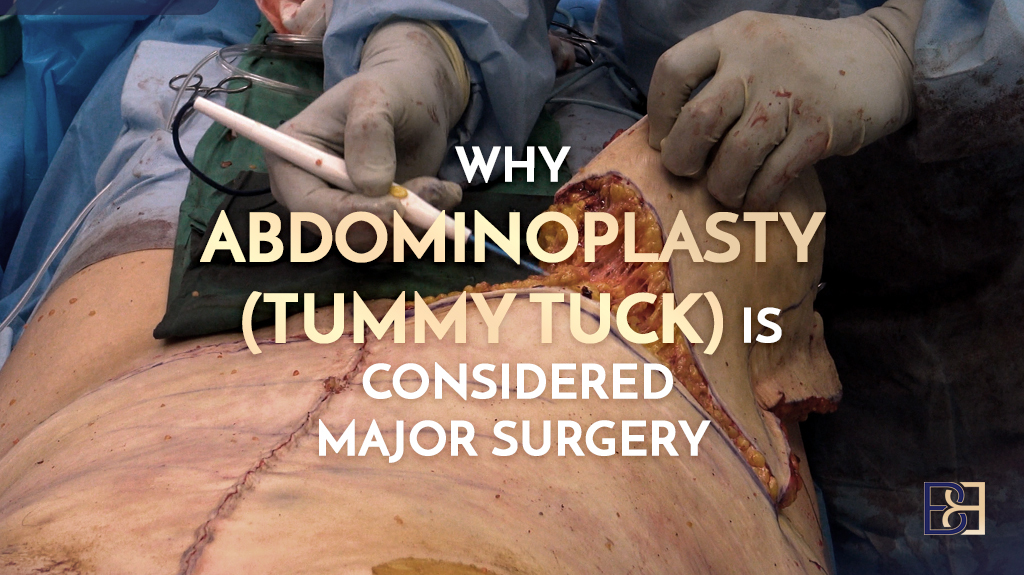How soon after pregnancy can I get abdominoplasty surgery? Typically, experts recommend waiting at least 6 months postpartum to allow your body to recover. Dr Beldholm’s recommendation is more like 12 months after your baby. This article will discuss waiting periods, factors affecting timing, and considerations for future pregnancies.
Key Takeaways
- It’s best to wait at least six months to a year after childbirth for an abdominoplasty, ensuring your body has fully healed and stabilised.
- Consider your future pregnancy plans before getting abdominoplasty, as subsequent pregnancies can affect surgery results.
- Choosing between a full vs. mini abdominoplasty depends on your specific needs, with each targeting different levels of skin laxity and muscle separation.
Recommended Waiting Period After Pregnancy
Book your appointment online now
The minimum recommended waiting period after childbirth before considering abdominoplasty is six months. This period allows your body to recover from the rigors of pregnancy and childbirth. However, many surgeons suggest waiting about a year to ensure that your body has fully stabilised and returned to its pre-pregnancy state. In the months after giving birth, reengaging in a regular fitness routine is essential.
Achieving your ideal weight before the surgery is another important factor. This not only helps in obtaining better surgical results but also ensures a smoother recovery period. Being as close to your pre-baby weight as possible minimises the chances of weight fluctuations that could affect the abdominoplasty results.
The first few weeks post-pregnancy are particularly delicate, as your body undergoes significant changes. Allowing your body to heal and regain strength makes the abdominoplasty results more effective and long-lasting.
Factors Influencing the Timing of Abdominoplasty

Several factors can influence the optimal timing for abdominoplasty surgery. One major consideration is breastfeeding. Breastfeeding-induced hormonal changes can affect the results of a tummy tuck (Abdominoplasty), delaying the body’s return to its pre-pregnancy state. If you plan to breastfeed for an extended period, it might be wise to wait until you’ve weaned your baby before considering the surgery.
Weight stability is another crucial factor. Post-pregnancy weight fluctuations can affect the decision to undergo abdominoplasty since a stable weight is preferable for optimal surgical results. Maintaining a consistent weight ensures the skin and tissues are in optimal condition for surgery.
Lastly, hormonal changes after pregnancy can affect skin elasticity, which is vital for determining the appropriate timing for the procedure. An abdominoplasty consultation with a specialist surgeon can help assess these factors and determine the best timeline for your procedure, ensuring the best possible outcome.
Considering Future Pregnancies
Future pregnancies should be considered when planning abdominoplasty. Pregnancy can alter the results of an abdominoplasty, potentially undoing its effects. For this reason, many surgeons recommend waiting until you are sure you have completed your family before undergoing abdominoplasty.
Considering more children may warrant delaying the surgery. Subsequent pregnancies can stretch the abdominal muscles and skin again, possibly requiring a second procedure to repair the initial results. Thus, waiting until you’ve made decisions about future pregnancies can ensure the longevity of your abdominoplasty results.
For those who are positive they won’t have more children, proceeding with the abdominoplasty procedure can be a viable option. However, if there is any uncertainty, it is wise to wait until your family plans are more settled. This approach helps in avoiding the need for additional surgeries and ensures you get the most out of your first procedure.
Types of Abdominoplasty Procedures
Abdominoplasty comes in several different forms, each designed to target specific needs. The main procedures are the full abdominoplasty and the mini abdominoplasty. Knowing the differences can guide you in choosing the most suitable procedure.
While the full abdominoplasty is a more extensive procedure that targets both the upper and lower abdominal areas, the mini abdominoplasty is less invasive and focuses on the lower abdomen. Both procedures are effective in their own right, but the choice depends on your personal needs and the extent of correction required.
Full Abdominoplasty Procedure

A full abdominoplasty is a comprehensive procedure designed to target the area both above and below the navel. This surgery repairs the abdominal muscles, esulting in a firmer and more toned look. The process includes making a horizontal incision above the pubic hairline to remove excess skin and fat.
One of the significant advantages of a full abdominoplasty is the extensive benefits it offers. Targeting both skin and muscle, the procedure corrects diastasis recti, a common post-pregnancy issue. Additionally, a full abdominoplasty can remove stretch marks located underneath the umbilicus, providing a smoother abdominal shape, while also considering the abdominoplasty scar.
A full abdominoplasty can be life-changing, especially for significant skin laxity and muscle separation. Combining this procedure with a balanced diet and regular exercise can help reduce excess fat and ensure long-lasting results.
Mini Abdominoplasty

The mini abdominoplasty is a surgical procedure designed for those with minimal loose skin and minor abdominal muscle separation. This procedure focuses specifically on the lower abdominal area and is less invasive than a full abdominoplasty. A smaller horizontal incision is made below the umbilicus, making recovery shorter and less intensive.
The mini abdominoplasty, ideal for minimal excess skin and slight muscle separation, targets the lower abdomen with less extensive surgery. This makes it a popular choice for those looking for a subtle but effective upgrade in their abdominal appearance.
Preparing for Abdominoplasty Surgery

Preparing for abdominoplasty surgery is vital for optimal results. It starts with maintaining a balanced diet and achieving a stable weight before the surgery. Achieving your ideal weight ensures surgical outcomes and a smoother recovery.
The initial consultation with your surgeon is crucial for discussing your health, goals, and expectations. This is also the time to follow any pre-operative instructions closely, including fasting before surgery to minimise risks.
Hydration and rest before surgery help prepare your body for the procedure’s stress. Following all pre-surgery guidelines not only supports the healing process but also contributes significantly to the overall success of the abdominoplasty.
What to Expect During Recovery
The period after an abdominoplasty recovery is crucial for healing. In the first few weeks, wearing compression garments minimises swelling and supports healing. You may feel tightness in the abdominal area, and walking in a hunched-over position can help alleviate strain on the incision site.
Refraining from strenuous activities for six to eight weeks facilitates proper healing. The recovery experience can vary widely depending on factors such as age, health, and the specific procedure performed. Strictly following post-operative guidelines ensures smooth recovery and optimal results.
Be aware of potential complications such as fluid accumulation (seroma), wound healing issues, and unexpected scarring. Understanding these rare complications can help you navigate the recovery period more effectively.
Check out this article for more detail on recovery: “Recovery Timelines for Abdominoplasty Surgery”
Benefits of Post-Pregnancy Abdominoplasty

Undergoing abdominoplasty post-pregnancy offers numerous benefits that go beyond cosmetics. It significantly builds core strength and abdominal contour by targeting both the upper and lower abdomen. The procedure eliminates extra skin, leading to a flatter and more defined abdominal area.

Disclaimer: Operation performed by Dr Bernard Beldholm. Adult content, surgery has risks; individual results vary, seek 2nd opinion. Please see the full disclaimer.
Abdominoplasty can also aid in posture management and alleviate back pain due to the stronger abdominal support it provides. Tightening the abdominal muscles reduces bulge and offers a more contoured appearance.
Allowing your body to recover post-pregnancy is essential for optimal surgical results. The physical and psychological benefits combined make abdominoplasty a valuable option for many postpartum women.
Potential Risks and Complications
As with any major surgery, abdominoplasty carries potential risks and complications. Selecting a qualified surgeon with extensive abdominoplasty experience ensures a successful outcome. Pre-surgery steps like smoking cessation and reviewing current medications with your surgeon reduce complications.
Potential risks include tissue damage and wound healing issues, particularly in smokers. Understanding these risks and discussing them with your surgeon during the initial consultation can help you prepare adequately and make informed decisions about the surgery.
Find out more about the risks of abdominoplasty surgery in this article: “It’s Complicated: The Patient’s Complete Guide to Abdominoplasty Risks”
Final Comments by Dr Beldholm

In summary, as your specialist surgeon, I believe that abdominoplasty after pregnancy can be an effective procedure, helping many women deal with muscle separation (diastasis recti) and loose skin. The recommended waiting period, careful consideration of future pregnancies, and thorough preparation are essential for achieving the best results. Understanding the types of procedures, what to expect during recovery, and the potential risks involved ensures you are well-informed before making a decision.
If you’re considering abdominoplasty, I encourage you to consult with a qualified specialist surgeon to discuss your goals and expectations.
Frequently Asked Questions
How long should I wait after giving birth to have an abdominoplasty?
It’s best to wait at least six months, but a year is even better, to let your body fully recover after giving birth before considering abdominoplasty. This way, you’ll be in the best shape for the procedure!
Can I have an abdominoplasty if I plan to have more children?
You should probably hold off on getting abdominoplasty until you’re done having kids, since future pregnancies can mess with your results. It’s best to plan ahead for those changes.
What is the difference between a full abdominoplasty and a mini abdominoplasty?
A full abdominoplasty works on both the upper and lower abdomen with a larger incision, whereas a mini abdominoplasty zooms in on just the lower abdomen with a smaller cut.
What should I do to prepare for abdominoplasty surgery?
To prep for your abdominoplasty, focus on eating a balanced diet, reaching your ideal weight, staying hydrated, and getting enough rest. Don’t forget to follow your surgeon’s pre-operative instructions closely!
What are the potential risks and complications of an abdominoplasty?
Abdominoplasty can come with risks like bleeding, infection, and tissue damage. The best way to avoid complications is to pick a qualified surgeon and stick to pre-surgery guidelines. Find out more about the risks of abdominoplasty surgery in this article: “It’s Complicated: The Patient’s Complete Guide to Abdominoplasty Risks”





